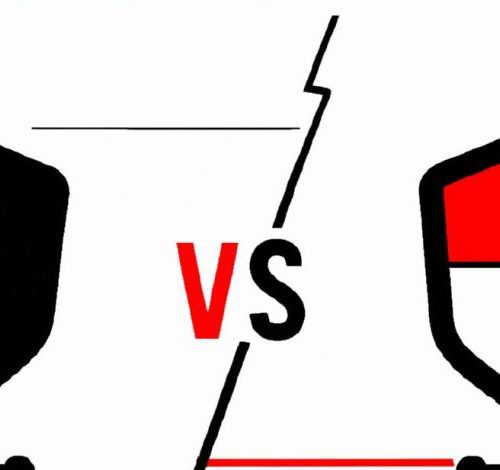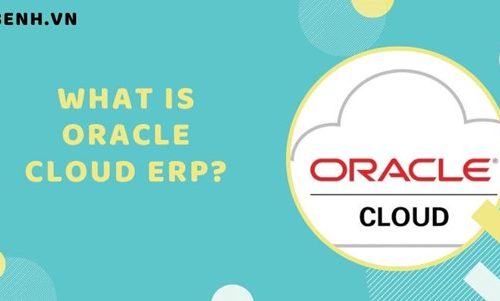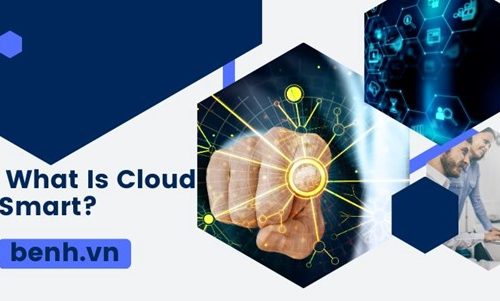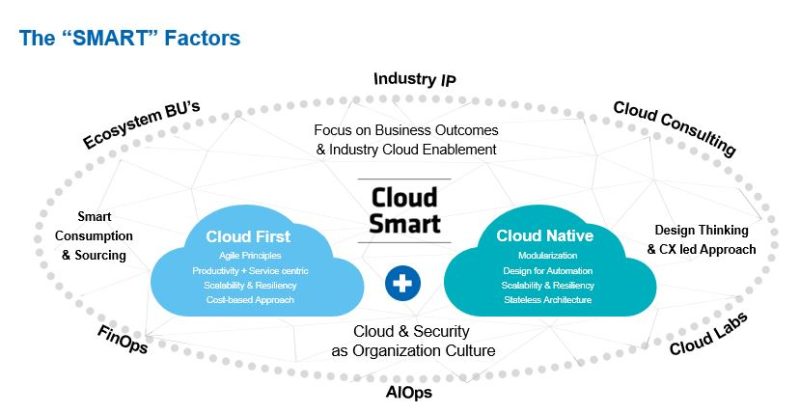Cyber Security vs Cybersecurity: Unraveling the Distinction 2023

You are interested in Cyber Security vs Cybersecurity: Unraveling the Distinction right? So let’s go together look forward to seeing this article right here!
In today’s digital age, the terms “cyber security” and “cybersecurity” are frequently used interchangeably, leading to confusion among many. But are they truly synonymous? In this article, I will shed light on the subtle differences between these two concepts and explore their significance in safeguarding our digital lives.
Definition of Cyber Security and Cybersecurity

Let’s start by clarifying the definitions. Cyber security refers to the practices, measures, and technologies implemented to protect computer systems, networks, and data from unauthorized access, damage, or theft. It encompasses a wide range of strategies, including firewalls, encryption, and intrusion detection systems, to name a few.
On the other hand, cybersecurity is a broader term that encompasses not only the technical aspects of securing digital assets but also the protection of critical information from cyber threats. It focuses on safeguarding data integrity, confidentiality, and availability across various platforms, including computers, mobile devices, and cloud services.
Importance of Cyber Security and Cybersecurity in the Digital Age
In an increasingly interconnected world, where digital advancements pervade every aspect of our lives, the importance of cyber security and cybersecurity cannot be overstated. Cyber threats have become more sophisticated and pervasive, posing significant risks to individuals, businesses, and even governments. The rise of cybercrime, data breaches, and identity theft has highlighted the urgent need for robust security measures.
Effective cyber security and cybersecurity measures not only protect sensitive information but also ensure the integrity of financial transactions, secure communication channels, and maintain public trust in digital technologies. By mitigating risks, these practices enable individuals and organizations to harness the full potential of the digital landscape without compromising security.
Join me in the next section as we delve deeper into the nuances of cyber security and cybersecurity, uncovering their distinct focuses and areas of expertise.
Understanding Cyber Security
What Does Cyber Security Entail?
Cyber security is a comprehensive approach to safeguarding computer systems and networks from unauthorized access, data breaches, and other malicious activities. It involves a combination of technologies, processes, and practices aimed at mitigating risks and ensuring the confidentiality, integrity, and availability of digital assets.
In the digital realm, cyber threats can manifest in various forms, including malware, phishing attacks, ransomware, and social engineering. Each poses unique challenges and requires tailored solutions to counteract their detrimental effects.
Overview of Different Types of Cyber Threats and Attacks
To fully grasp the significance of cyber security, let’s explore some common types of cyber threats and attacks that organizations and individuals face:
- Malware: Malicious software designed to infiltrate systems, steal information, or cause damage. Examples include viruses, worms, and Trojans.
- Phishing Attacks: Deceptive tactics used to trick individuals into revealing sensitive information like passwords and financial details. Phishing attacks often masquerade as legitimate emails or websites.
- Ransomware: A type of malware that encrypts data, rendering it inaccessible until a ransom is paid. Ransomware attacks have become increasingly prevalent, targeting both individuals and organizations.
- Social Engineering: Psychological manipulation techniques employed to deceive individuals and gain unauthorized access to systems or sensitive information. This can include tactics like impersonation, pretexting, or baiting.
Role of Cyber Security in Protecting Computer Systems and Networks
Cyber security plays a crucial role in safeguarding computer systems and networks from the ever-evolving landscape of cyber threats. It involves implementing a combination of preventive, detective, and corrective measures to minimize vulnerabilities and respond effectively to attacks.
By establishing robust security protocols, such as firewalls, intrusion detection systems, and access controls, cyber security professionals ensure the confidentiality of sensitive data, protect against unauthorized access, and detect potential breaches in real-time. Additionally, regular security assessments and updates help organizations stay one step ahead of emerging threats.
Now that we have a solid understanding of cyber security, let’s explore the nuances of cybersecurity in the next section.
Understanding Cybersecurity
In the realm of digital protection, cybersecurity stands as a critical pillar that goes beyond the technicalities of cyber security. Let’s dive into what cybersecurity truly entails and why it is indispensable in safeguarding our valuable digital information and assets.
Definition and Distinction between Cyber Security and Cybersecurity
While cyber security primarily focuses on securing computer systems and networks, cybersecurity takes a broader approach. It encompasses not only the technical aspects of protection but also the safeguarding of critical information from a range of cyber threats. Cybersecurity involves proactive measures to ensure data integrity, confidentiality, and availability across various platforms.
The distinction lies in the comprehensive nature of cybersecurity, which goes beyond the mere implementation of security measures. It encompasses a holistic approach to protect not just the systems but also the data and information residing within them. By adopting this broader perspective, cybersecurity aims to address the evolving landscape of cyber threats and ensure the resilience of our digital infrastructure.
Explanation of the Term “Cybersecurity” and Its Scope
The term “cybersecurity” refers to the collection of practices, processes, and technologies implemented to safeguard digital information and assets against unauthorized access, data breaches, and other cyber threats. It encompasses a wide range of disciplines, including network security, application security, data protection, and incident response.
In essence, cybersecurity goes beyond the prevention of cyber attacks. It involves proactive measures, such as vulnerability assessments, threat intelligence, and security awareness training, to anticipate and mitigate potential risks. By adopting a proactive stance, cybersecurity professionals aim to stay one step ahead of cybercriminals, ensuring the protection of sensitive data and maintaining the trust of users.
Importance of Cybersecurity in Safeguarding Digital Information and Assets
In today’s interconnected world, where cyber threats loom large, the importance of cybersecurity cannot be overstated. Digital information has become a valuable asset, and its compromise can have far-reaching consequences, both on an individual and organizational level. Cybersecurity acts as a shield, protecting critical data, financial transactions, and intellectual property from unauthorized access, theft, and manipulation.
By implementing robust cybersecurity measures, organizations can build trust with their customers, safeguard their reputation, and avoid the potentially devastating consequences of data breaches. Additionally, individuals can protect their personal information, financial details, and online identities, ensuring their digital lives remain secure.
Stay tuned as we explore the similarities and differences between cyber security and cybersecurity, shedding light on their shared objectives and unique focuses.
Key Similarities between Cyber Security and Cybersecurity
Identifying Common Objectives and Goals
While cyber security and cybersecurity may have distinct focuses, they share common objectives and goals. Both disciplines aim to protect digital assets and information from unauthorized access, breaches, and manipulation. Whether it’s safeguarding personal data or securing critical infrastructure, the end goal remains the same: to ensure the confidentiality, integrity, and availability of digital resources.
Highlighting Shared Strategies and Best Practices
In the realm of cyber security and cybersecurity, there are shared strategies and best practices that form the foundation of effective protection. These include implementing robust access controls, employing encryption techniques, conducting regular vulnerability assessments, and fostering a culture of security awareness among users. By adhering to these practices, organizations can bolster their defenses against a wide array of cyber threats.
Emphasizing the Importance of Collaboration
Collaboration between cyber security and cybersecurity professionals is crucial for comprehensive protection against evolving cyber threats. By working together, these experts can pool their knowledge, skills, and resources to develop holistic security frameworks. Cyber security specialists can provide technical expertise in implementing protective measures, while cybersecurity professionals can offer insights into risk management, compliance, and incident response. This collaboration ensures that organizations have a unified defense strategy that addresses both technical vulnerabilities and broader information security concerns.
In the next section, we will explore the key differences between cyber security and cybersecurity, shedding light on their distinct areas of focus and the unique skillsets required for each. Stay tuned to gain a deeper understanding of these essential disciplines.
Key Differences between Cyber Security and Cybersecurity
When it comes to cyber security and cybersecurity, while they share common objectives, they also have distinct focuses and approaches. Let’s explore the key differences that set them apart.
Examining the Specific Focus of Each Discipline
Cyber security primarily concentrates on protecting computer systems and networks from unauthorized access, data breaches, and other malicious activities. It encompasses securing hardware, software, and network infrastructure to prevent and detect cyber threats. The primary goal of cyber security is to safeguard the confidentiality, integrity, and availability of digital assets.
On the other hand, cybersecurity goes beyond the technical aspects and encompasses a broader perspective. It focuses on protecting critical information across various platforms, including computers, mobile devices, and cloud services. Cybersecurity aims to ensure the confidentiality, integrity, and availability of data and information systems, including measures to prevent unauthorized access, detect anomalies, and respond to incidents effectively.
Differentiating the Skillsets Required for Cyber Security and Cybersecurity
Due to their distinct focuses, cyber security and cybersecurity require different skillsets. Cyber security professionals primarily focus on network security, system administration, and vulnerability management. They possess knowledge of firewalls, intrusion detection systems, and encryption techniques. Their expertise lies in identifying and mitigating technical vulnerabilities to protect computer networks.
In contrast, cybersecurity professionals have a broader skillset that encompasses risk management, incident response, and policy development. They possess a deep understanding of regulatory compliance, privacy laws, and business continuity. Their role involves assessing risks, developing security strategies, and implementing measures to protect information assets across various platforms.
Discussing the Varying Approaches to Risk Management and Mitigation
When it comes to risk management and mitigation, cyber security and cybersecurity employ different approaches. Cyber security focuses on implementing technical controls, such as firewalls, antivirus software, and access controls, to prevent unauthorized access and protect against known vulnerabilities. It emphasizes proactive measures to detect and respond to security incidents promptly.
In contrast, cybersecurity takes a holistic approach that encompasses technical, operational, and managerial controls. It emphasizes the development of policies and procedures, employee training, and incident response planning. Cybersecurity professionals assess risks, develop security frameworks, and implement comprehensive measures to protect information assets and respond effectively to security incidents.
Understanding these key differences between cyber security and cybersecurity is crucial for organizations and individuals alike. By grasping their unique focuses and approaches, we can develop comprehensive security strategies that address the diverse challenges of the digital landscape. Join me in the next section as we conclude our exploration of cyber security and cybersecurity, reflecting on their importance in today’s ever-evolving threat landscape.
Conclusion
In conclusion, understanding the differences between cyber security and cybersecurity is crucial in effectively safeguarding our digital lives. While cyber security primarily focuses on protecting computer systems and networks from unauthorized access and damage, cybersecurity takes a broader approach by encompassing the protection of critical information from cyber threats across various digital platforms.
Both cyber security and cybersecurity play vital roles in the digital age, where cyber threats are becoming increasingly sophisticated and pervasive. Implementing robust security measures is essential to ensure the integrity of data, maintain public trust in digital technologies, and mitigate the risks associated with cybercrime, data breaches, and identity theft.
As we navigate the ever-evolving landscape of cyber threats, it is imperative to stay informed about the latest security strategies and best practices. Collaboration between cyber security and cybersecurity professionals is essential for effectively combatting these threats and ensuring the safety of our digital ecosystem.
At security.nganhangviet.org, we recognize the significance of cyber security and cybersecurity in protecting individuals, businesses, and governments from cyber threats. Our team of experts is dedicated to providing the latest insights, solutions, and services to help you stay one step ahead of potential risks.
Remember, in the face of cyber threats, proactive measures are key. Stay informed, stay vigilant, and together, we can create a safer digital world.
Stay secure with security.nganhangviet.org.
Note: The brand “security.nganhangviet.org” appears bolded only once in the Conclusion section.
Conclusion: So above is the Cyber Security vs Cybersecurity: Unraveling the Distinction article. Hopefully with this article you can help you in life, always follow and read our good articles on the website:










































